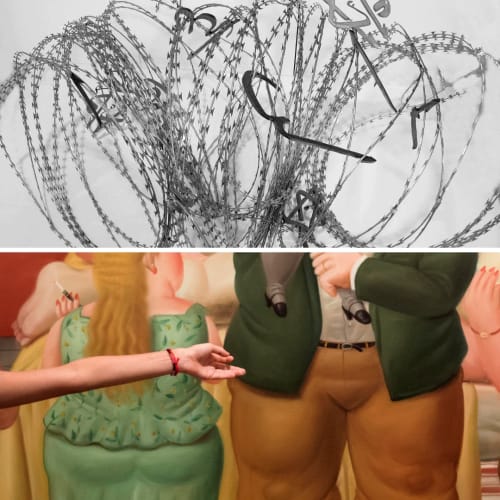The exhibition “Normopathies. Works from the Es Baluard Museu Collection” presents a selection of works from the museum’s collection, dating from the European postwar to the first two decades of the 21st century, leads to an essay on the relationship between writing as a technique in the exercise of power and its normative will. This arises, in turn, from an encounter with British anthropologist Jack Goody (1919–2015), known for his contributions to the history of the effects of writing’s emergence in antiquity. The recording of the final interview with this researcher, shortly before his passing, serves as the prologue to the selection from the Collection. In our contemporaneity, nonetheless, forms of power are as heterogeneous as the many proliferate forms of writing.
Jack Goody (London, 1919 – Cambridge, 2015) is not a trendy intellectual. He was, however, one of the most influential anthropologists of the second half of the 20th century. His research put particular emphasis on writing as a mechanism of social consolidation. From an anthropological, historical and linguistic perspective, Goody revealed the dynamics of historical change and the emergence of new forms of power that writing, camouflaged as technology, came to catalyse.
This selection of works from the Es Baluard Museu d’Art Contemporani de Palma Collection aspires to be a project able to forge a history with these forms of powerless writing—forms that have not been constituted as a hegemonic writing—while reconsidering them from a contemporary perspective. Just like someone who might go back and listen to Jack Goody, in the hope of catching some meaning that had been missed. Now, however, the apparatus used to activate these works from the Collection is constituted by the critical positions expressed by the creators of other works, also belonging to the Collection.
While there are contemporary works of art, such as by mounir fatmi and Petrit Halilaj, that continue to remind us of the persistence of writing and its complicity with normative power, often associated with the absolutist power of states and borders, there is likewise an emerging acknowledgment of writings that have existed on the margins of patriarchal societies and the instruments of control they have historically wielded. Eulàlia Valldosera, Núria Güell, Miriam Cahn, Joan Morey and many others convert the Es Baluard Collection into an ideal laboratory for a renewed consideration of Jack Goody’s seminal idea.
To read the full article, please click on the link below..
August 1, 2024



